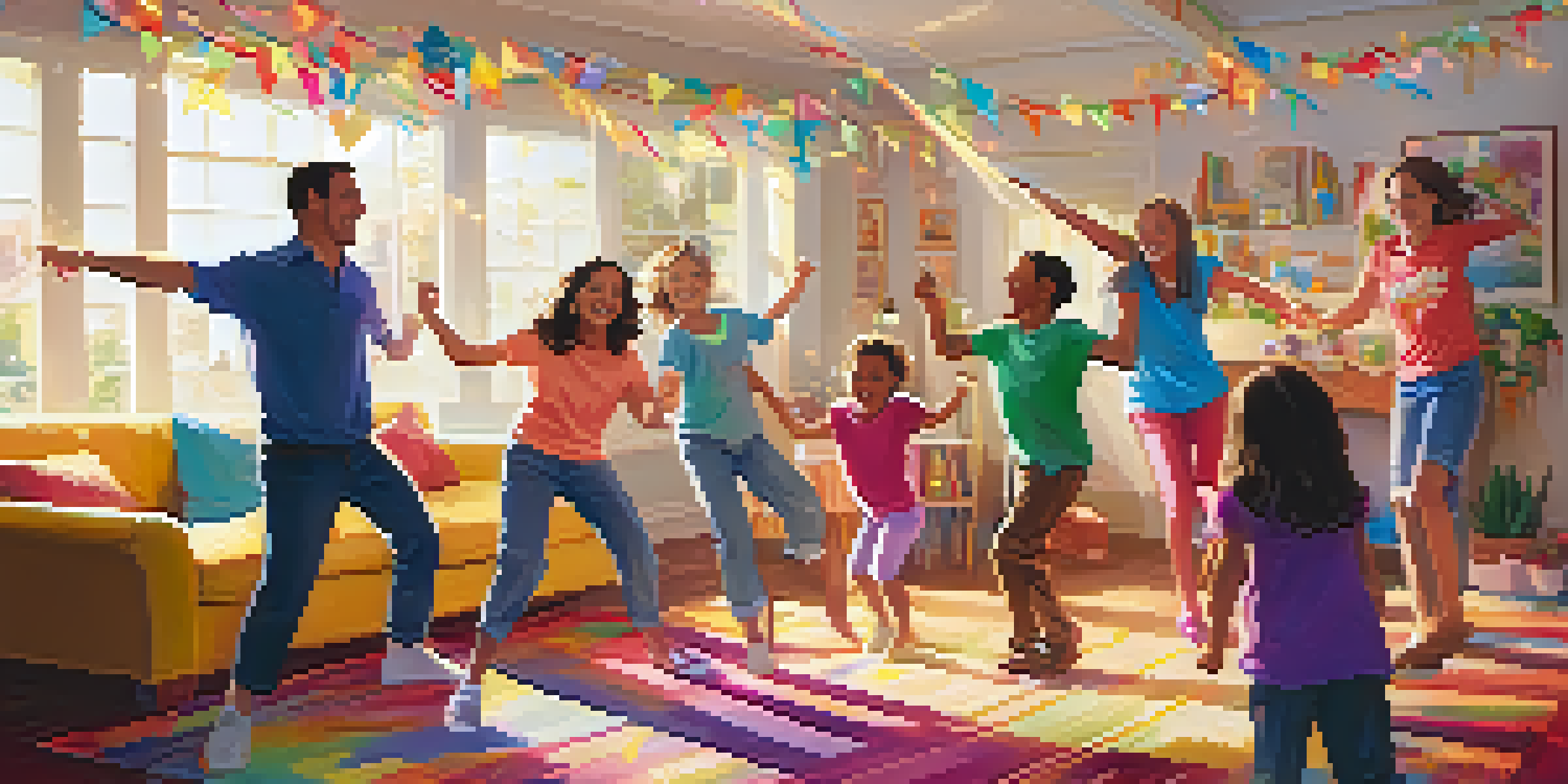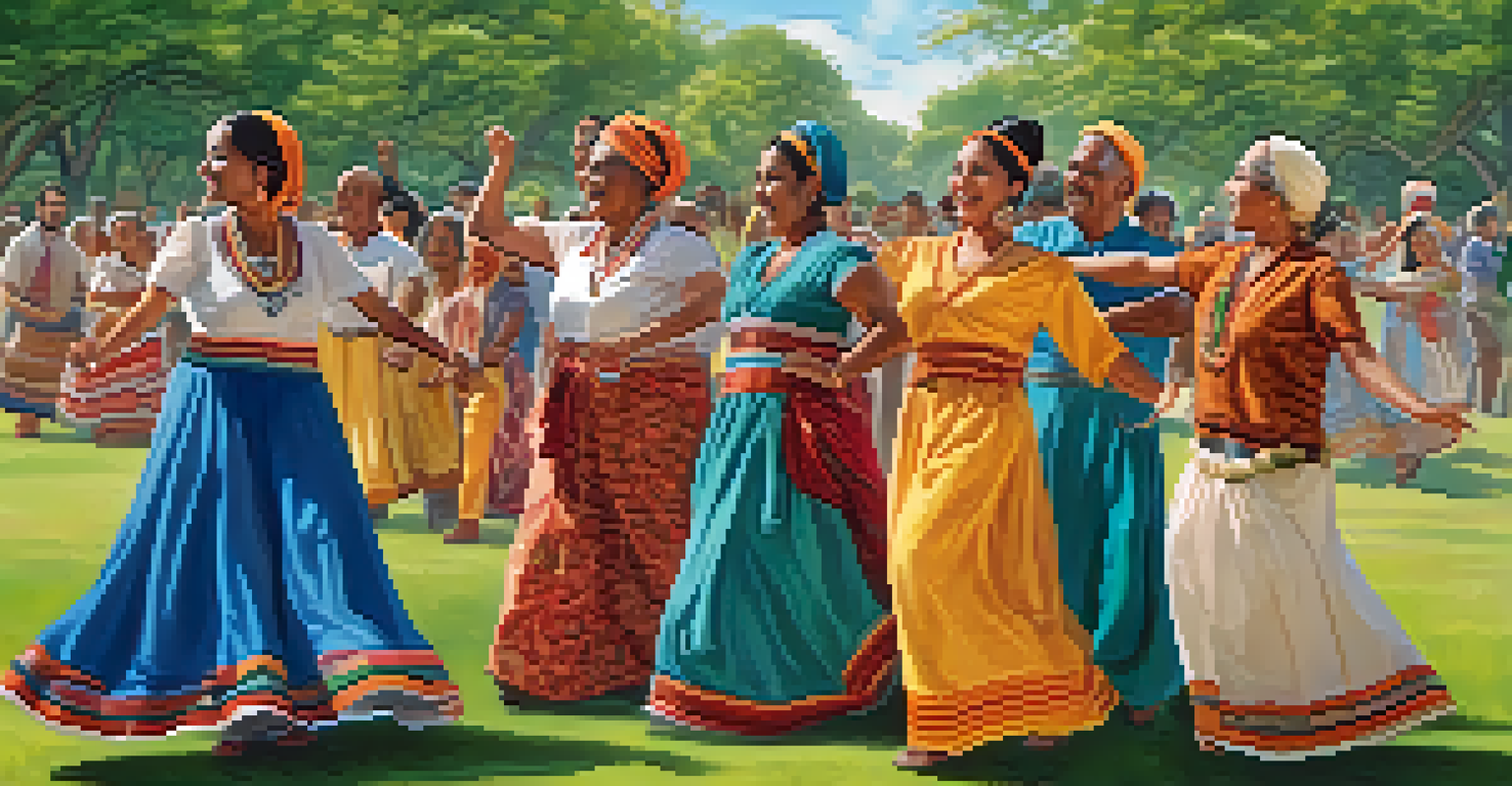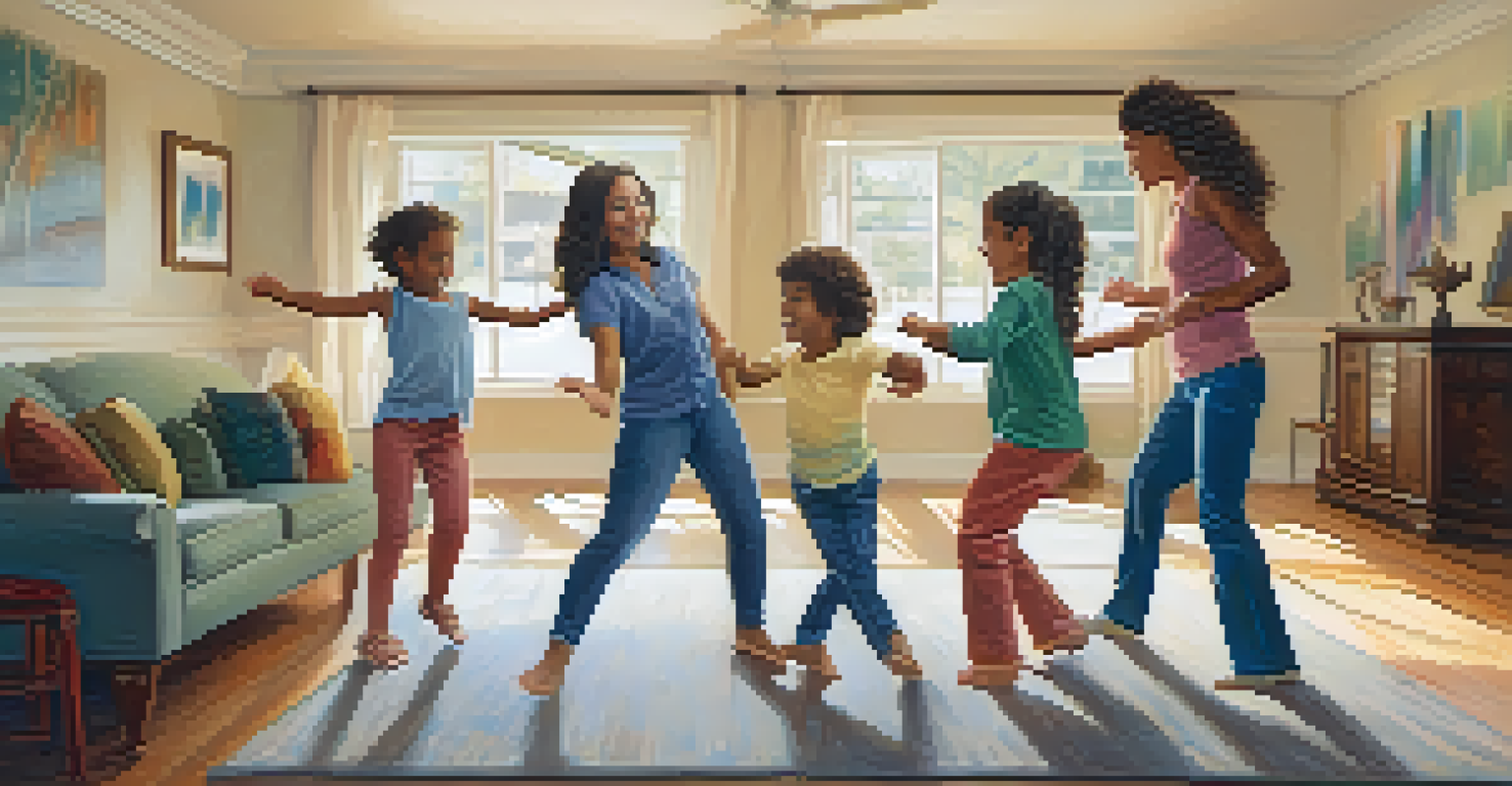Dance Bonding: How Movement Unites Families Across Generations

The Universal Language of Dance: Connecting Across Ages
Dance is often called the universal language, and for good reason. It transcends words and speaks to our emotions, allowing families to connect in ways that words sometimes cannot. From toddlers wiggling to their favorite songs to grandparents reminiscing through traditional dances, movement creates a shared experience that can be deeply bonding.
Dance is the hidden language of the soul.
When families engage in dance together, they create memories that last a lifetime. Whether it’s a spontaneous living room dance party or a planned family reunion featuring a dance-off, these moments foster a sense of belonging and connection. Everyone, regardless of age, can participate and share their unique style, making dance a truly inclusive activity.
Moreover, dance encourages families to learn from one another. Younger generations can introduce their favorite modern moves, while older generations can pass down cherished traditions. This exchange strengthens familial ties and enriches everyone's understanding of their cultural heritage.
Building Confidence Through Movement: A Family Affair
Dance can be a powerful tool for building confidence, especially in children. When families dance together, it creates a safe space for children to express themselves without fear of judgment. This freedom to move and be silly can help kids develop a positive self-image, which they carry into other areas of their lives.

For adults, participating in family dance sessions can reignite a sense of joy and playfulness that may have been lost in the hustle of daily life. Letting loose on the dance floor can serve as a reminder that it’s okay to be vulnerable and have fun. This shared vulnerability strengthens the bond between family members and creates lasting memories.
Dance Fosters Family Connection
Engaging in dance creates shared experiences that strengthen bonds and foster a sense of belonging among family members.
As families create their own dance traditions, such as a yearly dance contest or a special dance for family gatherings, they foster an environment where everyone feels valued. Each person’s contribution, no matter how big or small, is celebrated, further enhancing their sense of belonging.
Dance as a Bridge: Connecting Cultures and Generations
Dancing is not only a way to bond within families but also a means to connect with cultural roots. Many families have traditional dances that have been passed down through generations, serving as a bridge to their heritage. Learning and performing these dances together allows families to honor their ancestry while creating shared experiences.
Dancing is like dreaming with your feet.
Through dance, families can explore and celebrate diversity within their own ranks. For instance, a family with multicultural backgrounds can blend various dance styles, from salsa to traditional folk dances. This fusion fosters understanding and appreciation of each other's backgrounds, enriching family dynamics.
Moreover, engaging in culturally significant dances can spark meaningful conversations about history, values, and traditions. These discussions often lead to a deeper appreciation of one's heritage, cultivating pride and respect among family members.
Strengthening Communication: Dance as a Non-Verbal Dialogue
Dance is inherently a form of non-verbal communication, allowing families to express emotions and feelings without uttering a single word. This can be especially beneficial for families navigating challenges or conflicts. When words may fail, rhythmic movement can convey support, love, and understanding.
Participating in dance together fosters empathy and connection, as family members learn to read each other's body language and cues. This can lead to improved communication skills, not just in dance, but in everyday interactions. When families feel more attuned to each other's emotions, they can navigate life’s ups and downs together more effectively.
Movement Builds Confidence
Dancing together allows children to express themselves freely, helping them develop a positive self-image while also reigniting joy for adults.
Additionally, dance encourages collaboration and teamwork within the family unit. Choreographing a dance together requires compromise, creativity, and active listening, skills that are essential for healthy relationships both on and off the dance floor.
Creating Lasting Memories: The Role of Dance in Family Traditions
Establishing dance traditions can provide families with cherished rituals that strengthen their bond. Whether it’s a special dance at every family wedding or a holiday dance party, these traditions create a sense of continuity and belonging. Family members look forward to these moments, knowing they will be filled with joy and connection.
As children grow up, these dance traditions become a part of their identity. They carry forward the memories of dancing with loved ones, which in turn influences how they interact with their own families in the future. This cycle of connection ensures that the joy of dance continues to be passed down through generations.
Moreover, documenting these family dance traditions through videos or photographs allows families to relive those moments and share them with future generations. This not only preserves the memories but also acts as a legacy of love, happiness, and togetherness.
The Therapeutic Benefits of Dance: Healing Through Movement
Dance offers numerous therapeutic benefits that can enhance family bonding. Engaging in movement helps release endorphins, the body's natural mood lifters, which can improve overall family dynamics. When families dance together, they create an environment filled with positivity and joy, which is essential for emotional well-being.
Moreover, dance can serve as an effective stress reliever. In times of uncertainty or difficulty, coming together to dance can provide a much-needed escape from the pressures of daily life. This collective outlet allows families to process emotions and support each other in a healthy way.
Cultural Heritage Through Dance
Family dance traditions serve as a bridge to cultural roots, promoting understanding and appreciation of diverse backgrounds.
For families dealing with grief or loss, movement can be a powerful form of expression. Dance provides an opportunity to honor loved ones in a meaningful way, allowing family members to connect through shared memories while finding solace in each other's presence.
Tips for Getting Started: Embracing Dance as a Family
Starting a family dance journey doesn’t have to be intimidating. Begin with something simple, like playing your family's favorite songs and inviting everyone to join in. No dance experience is necessary; the goal is to have fun and enjoy each other's company. You might be surprised at how quickly everyone loosens up!
Consider exploring different dance styles together. From hip-hop to ballroom to folk dances, there’s a world of movement to discover. You can even take a family class together, which not only teaches new skills but also fosters teamwork and cooperation.

Lastly, remember that the most important aspect of family dance is the joy it brings. Celebrate the little victories, laugh at the missteps, and savor the moments spent together. The more you dance, the more cherished memories you’ll create as a family.